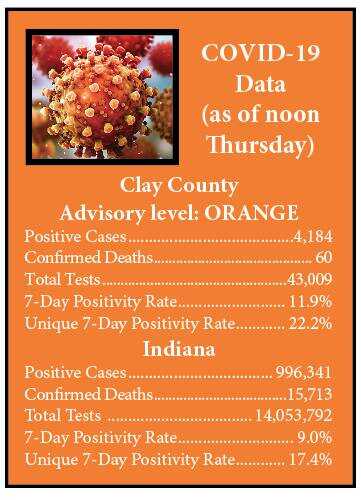Flu season may come early this year

Although the spread of the COVID-19 virus appears to be slowing, the Centers for Disease Control and Prevention (CDC) is warning people the upcoming flu season could come early and be severe.
After the mildest flu season on record in 2020, according to the CDC, “the timing of flu is difficult to predict and can vary in different parts of the country and from season to season. Reduced population immunity due to lack of flu virus activity since March 2020 could result in an early and possibly severe flu season.”
There are two main types of influenza (flu) viruses: Types A and B. The influenza A and B viruses routinely spread in people (human influenza viruses) are responsible for seasonal flu epidemics.
The best way to reduce the risk of flu and its potentially serious complications is by getting vaccinated each year.
Doctors are urging everyone to get vaccinated. Flu vaccines help to reduce the burden of flu illnesses, hospitalizations, and deaths on the health care system each year.
This season, all flu vaccines will be designed to protect against the four flu viruses that research indicates will be most common.
Everyone 6 months and older should get an annual flu vaccine, ideally by the end of October. Learn more about vaccine timing.
Vaccination of people at higher risk of developing flu complications is vital to decreasing the risk of severe flu illness.
People at higher risk of severe flu complications include young children, pregnant people, people with certain chronic health conditions like asthma, diabetes, heart and lung disease, and 65 years and older.
Children younger than 6 months are at higher risk of serious flu illness but are too young to be vaccinated. People who care for infants should be vaccinated instead.
Take everyday preventive actions to stop the spread of germs (and COVID19).
Take everyday preventive actions that are recommended to reduce the spread of flu.
Avoid close contact with people who are sick.
If you are sick, limit contact with others as much as possible to keep from infecting them.
Cover coughs and sneezes.
Cover your nose and mouth with a tissue when you cough or sneeze. Throw the tissue in the trash after you use it.
Wash your hands often with soap and water. If soap and water are not available, use an alcohol-based hand rub.
Avoid touching your eyes, nose, and mouth. Germs spread this way.
Clean and disinfect surfaces and objects that may be contaminated with viruses that cause flu.
For flu, CDC recommends people stay home for at least 24 hours after their fever is gone except to get medical care or other necessities. Fever should be gone without the need to use a fever-reducing medicine.
In the context of the COVID-19 pandemic, local governments or public health departments may recommend additional precautions in your community. (Follow those instructions.)
Note, the stay-at-home guidance for COVID-19 may be different.
Learn about some of the similarities and differences between flu and COVID-19.
ISDH STATE/COUNTY COVID-19 Data
The COVID-19 virus appears to be dissipating throughout Indiana, with 8 counties in RED, 15 in YELLOW, and 69 in ORANGE, including Clay County.
The most current dashboard shows a lot of changes, including:
ORANGE - Weekly 2-Metric Score (2.5)
ORANGE - Advisory Level
ORANGE - 7-Day All Tests Positivity Rate (2)
RED - Weekly Cases Per 100,000 Residents (3)
Of the Clay County residents testing positive for the virus, 54.7% were female, 45% male, and .2% unknown.
The ISDH shows that 3,337,984 residents are considered fully vaccinated, with 10,520 residents in Clay County vaccinated.
Learn more by logging onto coronavirus.in.gov.
